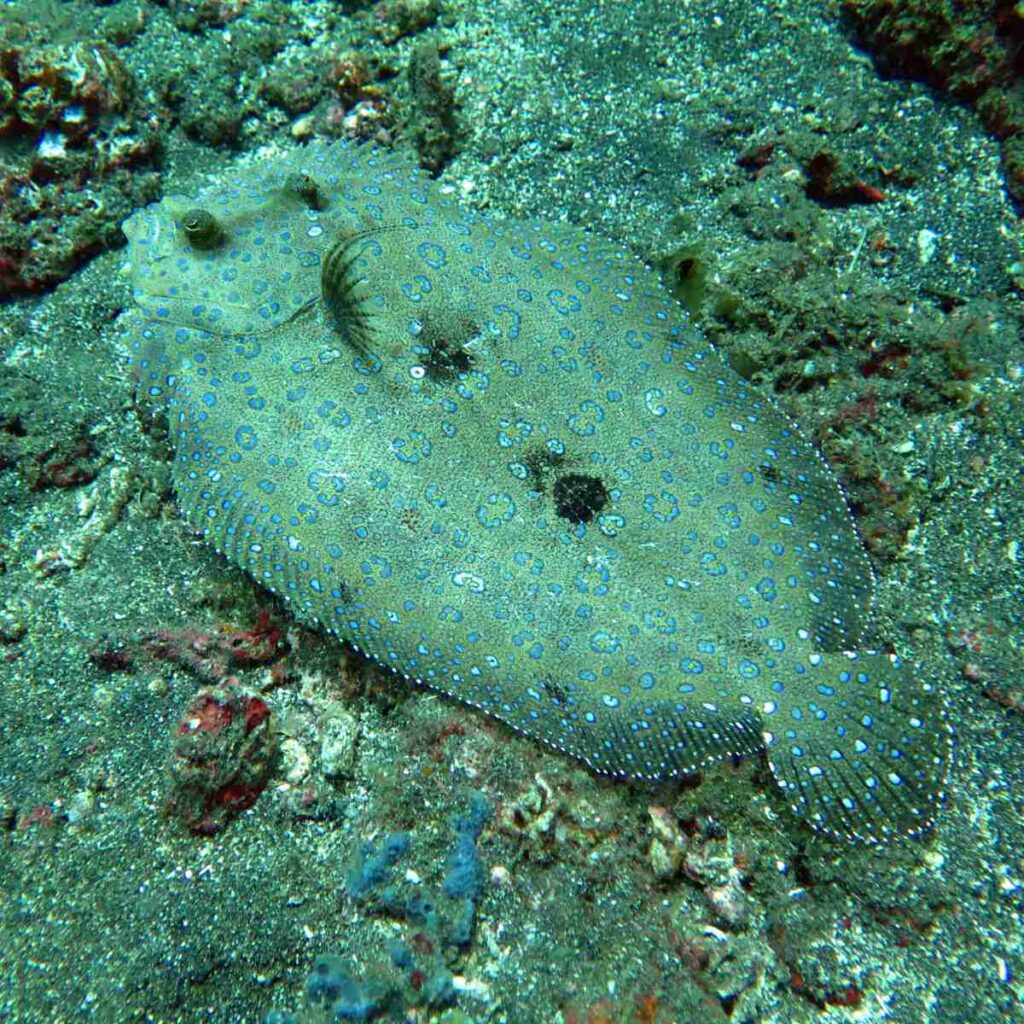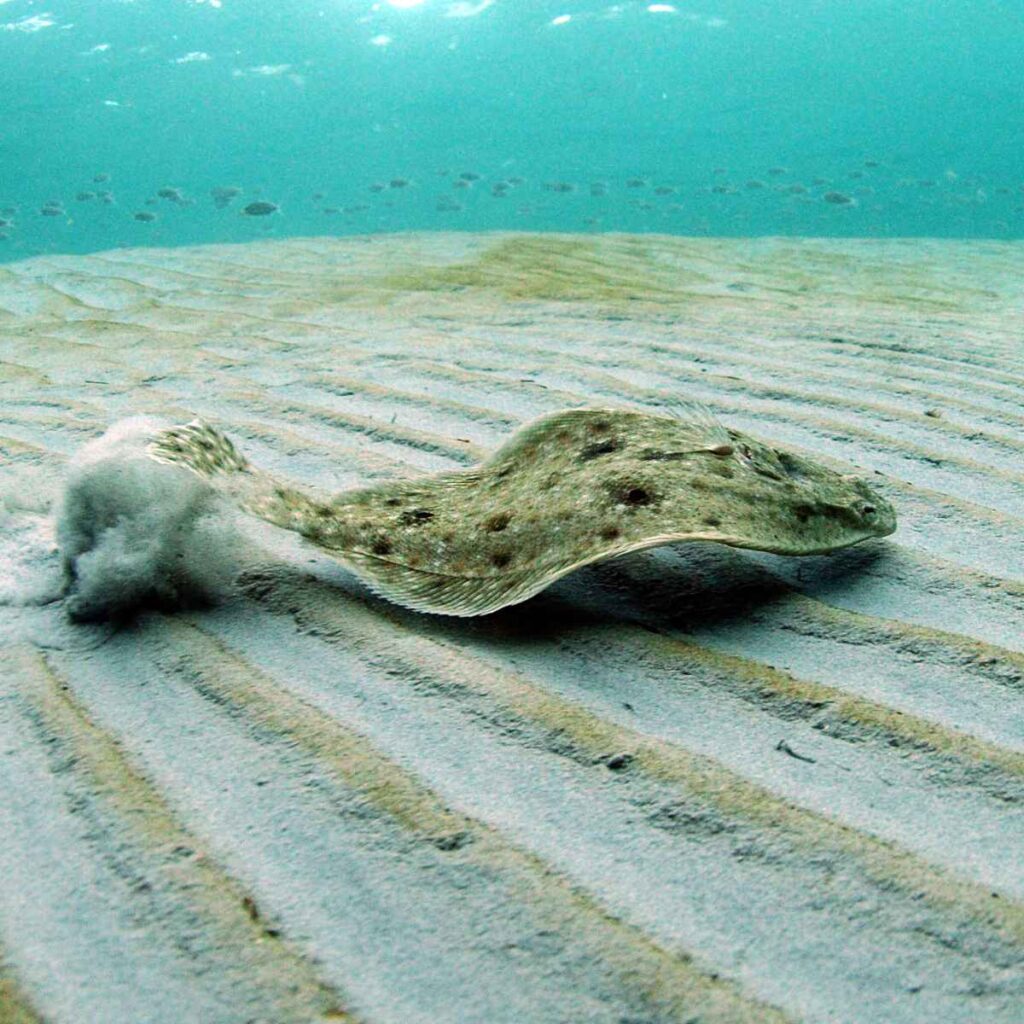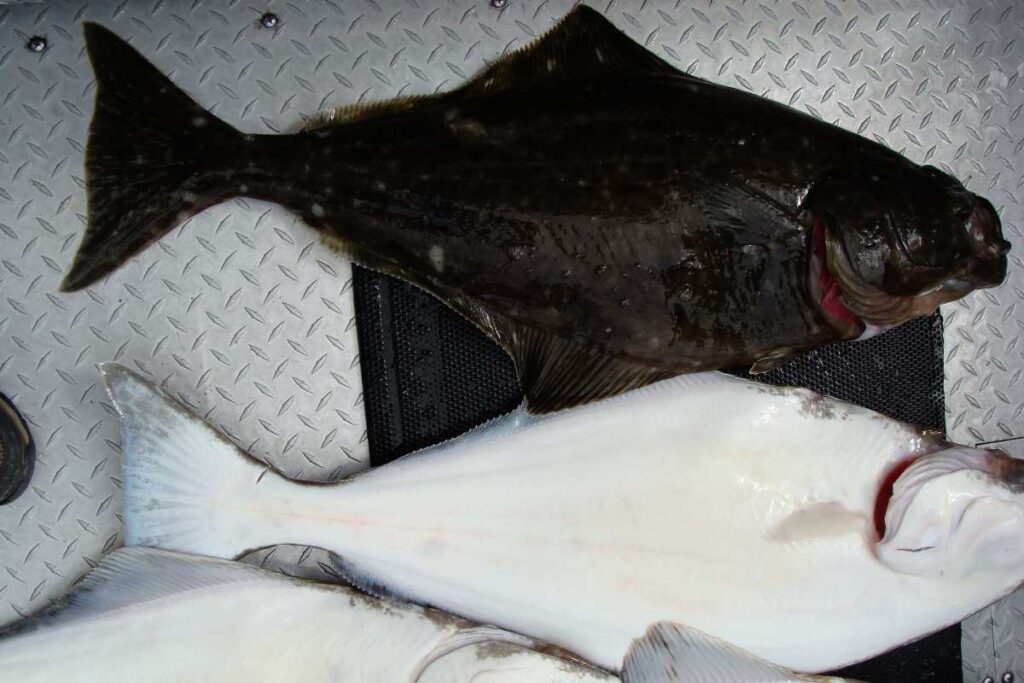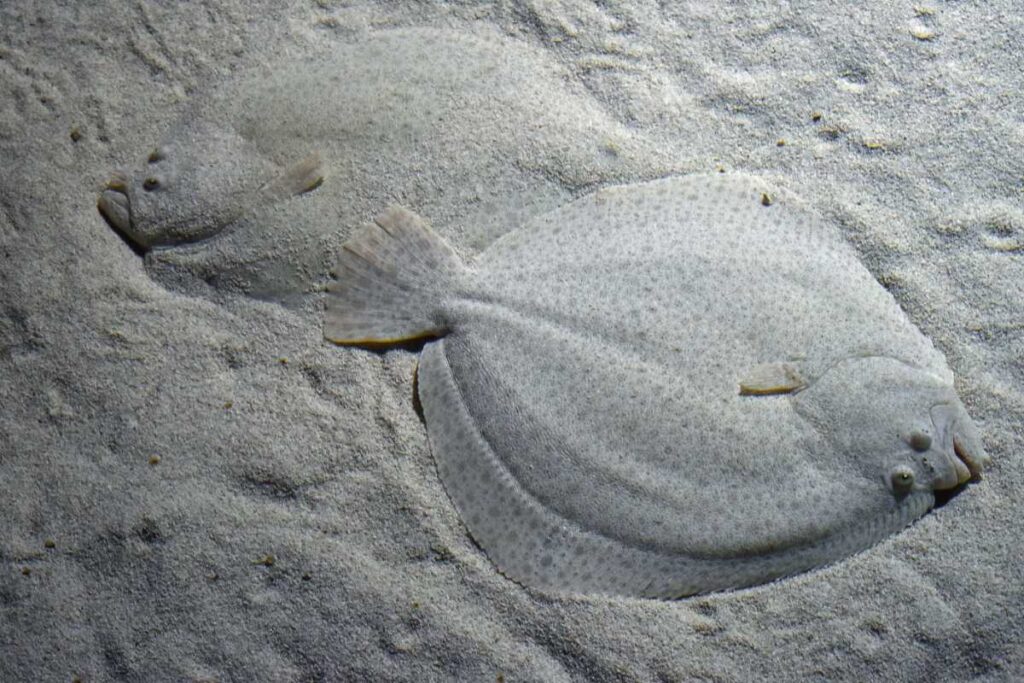Last Reviewed and Updated on February 26, 2023
Flounder fish are known for their unique anatomy, which allows them to blend seamlessly into their surroundings. We will explore some fascinating facts about flounders, shedding light on their development and unique features.

About flounder fish
Flounder fish is a type of flatfish that belongs to the suborder Pleuronectidae. They belong to different families; Pleuronectidae, Paralichthyidae, Bothidae, and Achiropsettidae.
They live in oceans and seas around the world. The name flounder is used for a variety of distantly related fish known for their distinctive flattened body shape and asymmetrical eyes.
Flounders have broad, flattened body that is ideal for living on the ocean floor. They are typically brown or gray in color, with a white underside that helps them blend in with the sandy or muddy ocean floor. Their eyes are located on the same side of their head, and the side of the body with the eyes is typically darker in color than the other side. This allows them to lie flat on the ocean floor and blend in with their surroundings, making them difficult to spot by predators and prey alike.
Flounder fish are primarily bottom-dwelling predators, feeding on a variety of small fish, crustaceans, and other invertebrates that live on or near the ocean floor.
Interesting facts about flounders
Dive into these fun facts about flounders, one of the most interesting fish groups out there.

If you enjoy learning about unusual animals, you will love our list of the 100 strangest creatures in the world or our list of 100 weird animal facts.
1. Their eyes migrate to one side of the body as they mature
Flounder fish undergo a unique developmental process that involves the migration of one eye to the opposite side of the head as they mature into adults, resulting in both eyes being located on the same side of the body.
As juveniles, flounder fish have eyes located on both sides of their head, much like other fish. As they grow and their body begins to flatten out, one eye begins to migrate towards the other side of the body.
2. Both sides of their body are the same color when they are juveniles
It’s not just the eyes that make a dramatic change; the color of their body changes as well. While both sides of the body are the same when they are juveniles, as they mature, the side of the body that gets the extra eye becomes more colorful, while the eyeless side is bright, almost white.

3. Most or all members of a particular species move their eyes to the same side
The side one eye moves to usually isn’t random. All or most members of a specific species either move the left eye to the right side of their body or the right eye to the left. They are divided into right-eyed flounders and left-eyed flounders.
4. They are masters of camouflage

Flounder fish have a remarkable ability to blend in with their environment. The unique shape of their body, which is flattened and laterally compressed, allows flounders to lie on the ocean floor and blend in with their surroundings. They are able to partially bury themselves in sand or mud as well.
5. Flounders can change color
Their coloration and patterns on their skin can change to match the substrate on which they lie, making them nearly invisible to predators and prey.
6. Flounders are ambush predators
They lie partially buried in the substrate with their eyes sticking out. They wait for prey to swim by and then quickly strike to capture their prey.
Their unique body shape and eye placement allow them to remain perfectly hidden while keeping an eye on their surroundings and unsuspecting prey.
7. The Atlantic halibut is the world’s largest flounder and flatfish
The female Atlantic halibut can weigh as much as 600 lb / 250 kg. Male adults weigh about 25 to 30 lb / 10 to 15 kg on average but can be larger. Although rarely, males can reach over 100 lb / 45 kg.
8. They are demersal fish
If you are looking for a new word to add to your dictionary, this is probably it. Halibut are demersal fish, meaning they feed on or near the bottom of water bodies.
9. Most are saltwater fish, although some can be found in brackish water
Freshwater flatfish, with a little misleading name, is one of the species that inhabit brackish waters and can tolerate freshwater environments.
